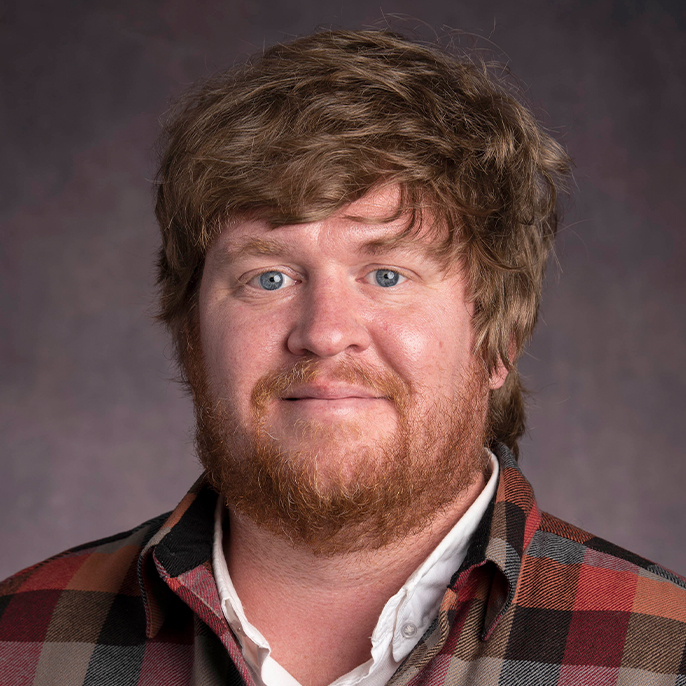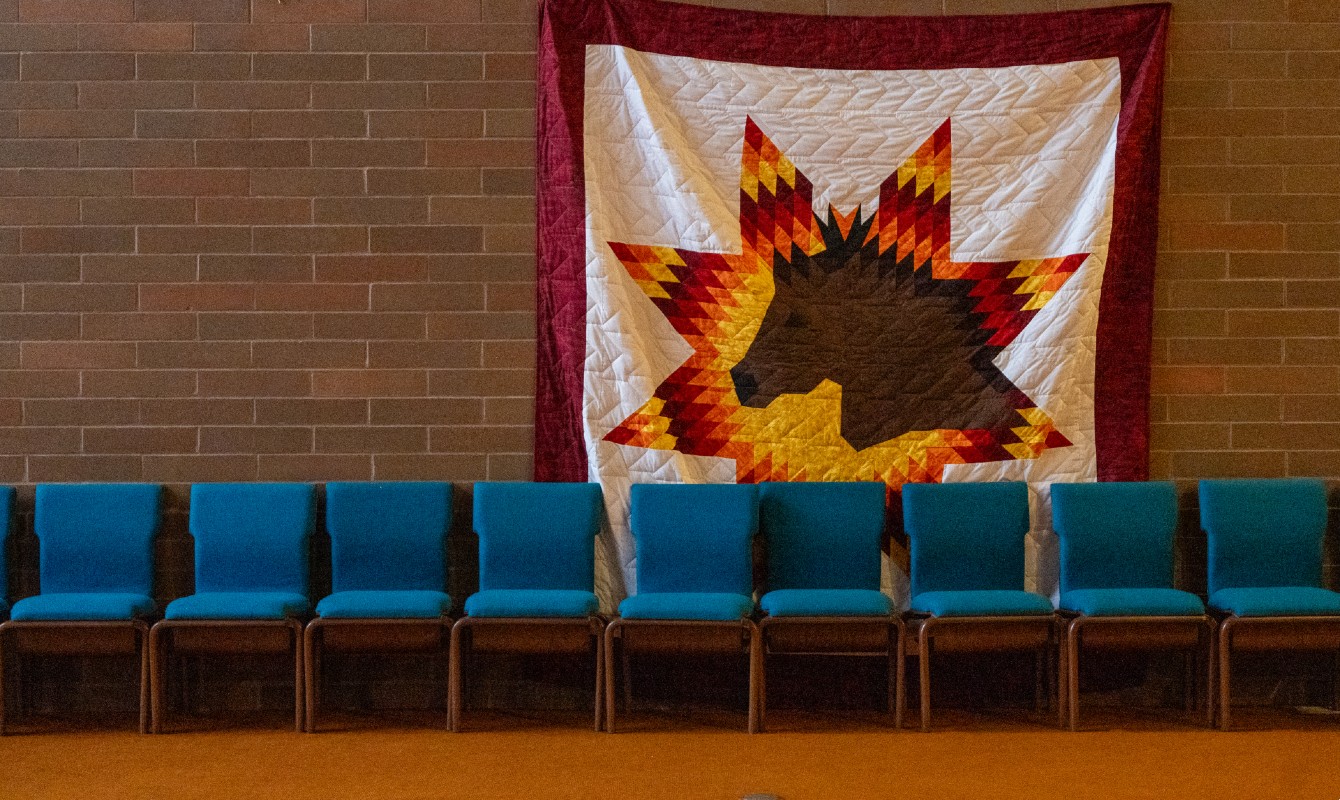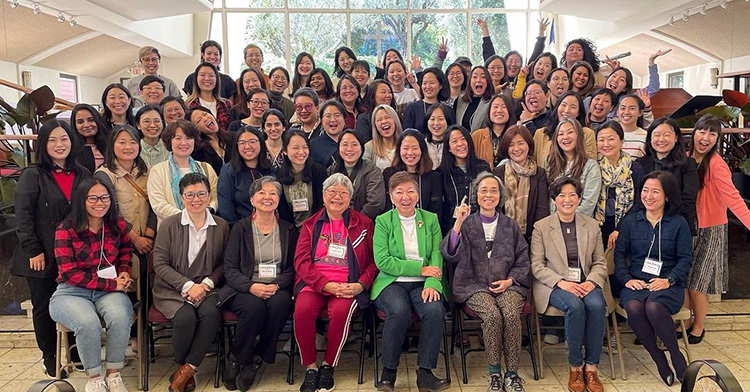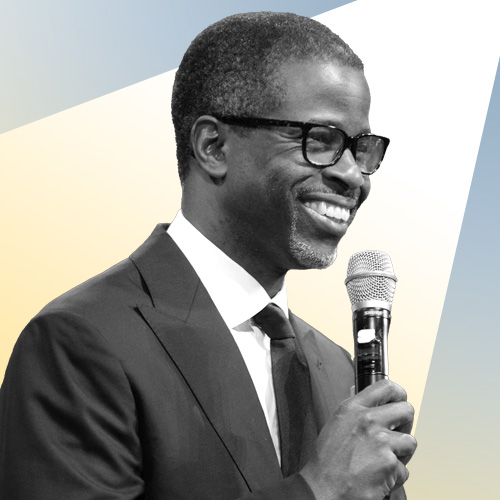GiveDirectly’s mission is summed up in its name. Using cutting-edge technology, American donors can transfer cash to people in Kenya and Uganda who are living in extreme poverty.
It’s a simple idea, but in some ways a radical one, say founders Michael Faye and Paul Niehaus.
People donate through the organization’s Web page. GiveDirectly transfers cash to recipients’ cellphones. The recipients, who live on an average of 65 cents per day, receive a total of $1,000 over one to two years, or $200 per household member for the average household. The people who receive the cash are free to do whatever they want with it.
An evaluation of the effect in Kenya found that assets and income increased, food insecurity and domestic violence decreased, and mental health improved substantially. It also found no increase of spending on tobacco, alcohol or gambling.
Faye and Niehaus created the nonprofit while they were Ph.D. students in economics at Harvard University, looking for reliable ways to give that had been validated by rigorous research.
In addition to offering people a way to give, Faye and Niehaus say they hope to “push the conversation on impact evaluation” by having engaged Innovations for Poverty Action (IPA), an external research organization, to measure the impact of GiveDirectly through randomized control trial.
Michael Faye is a management consultant who has worked with one of India’s largest banks and has conducted extensive field research in India.
Paul Niehaus is an assistant professor of economics at the University of California, San Diego. His research examines the design of welfare programs in developing countries, and in particular how to control corruption.
Faye and Niehaus spoke with Faith & Leadership while visiting Duke University’s Center for International Development. The following is an edited transcript.
Q: How does faith influence the work you do?
 Niehaus: It’s the motivation for what I do. It doesn’t factor in too much to the day-by-day, but there’s this pretty explicit mandate in the Bible to take care of the poor.
Niehaus: It’s the motivation for what I do. It doesn’t factor in too much to the day-by-day, but there’s this pretty explicit mandate in the Bible to take care of the poor.
It is a fascinating idea that when you care for the poor you’re caring for Christ. That’s an incredible powerful idea because our ways of relating that directly to God are pretty limited. So [the idea] that you can do so through ministry to the poor is pretty amazing.
I was fortunate to grow up in a family that went to a Christian and Missionary Alliance church, and the neat thing about that is you have rotating through every year people who are living in rural communities in developing countries who talk to you about what life is like.
That’s a great way as a privileged, white kid growing up in the U.S. to have some sense of this other world that’s out there.
Q: In some ways it maybe shouldn’t be a radical idea that what poor people need is money. But your organization is unusual. Why not do what other organizations do to help poor people?
 Faye: The incredible thing about [giving] cash is that at one level it’s common sense and at another level it’s considered radical. I think that the reason it’s radical is that it puts the choice in the hands of the poor, while much of this sector makes decisions on their behalf.
Faye: The incredible thing about [giving] cash is that at one level it’s common sense and at another level it’s considered radical. I think that the reason it’s radical is that it puts the choice in the hands of the poor, while much of this sector makes decisions on their behalf.
We became convinced that this was what we wanted to do because of the evidence. Cash transfers has a decade or more of rigorous academic evidence which demonstrates large positive impact over a longer term than most other development interventions.
Q: What attitude about poor people underlies your approach?
Faye: The underlying attitude is trust. It’s the idea that you are poor in Africa not because you are a bad or untrustworthy person but because you were born in a really harsh, difficult environment with limited resources. We are based on the belief that you can trust the poor to make wise decisions on their own behalf. And that assumption is supported by the evidence.
Niehaus: But if the data didn’t say this, we wouldn’t be doing this. As it turns out, poor people are reasonably responsible stewards.
Q: You don’t control the spending, right?
Niehaus: Well, no donor does. You give to an organization and they control it or you give to the poor and they control it. The question is just who has the better track record.
We were two guys who were trying to figure out where to give their money away when we were in grad school, doing Ph.D.s in development economics. We were constantly reading research on what’s effective and what isn’t. That’s what led us to cash transfers.
Q: Is this a business for you? Does GiveDirectly make money for you?
Faye: This is driven by social goals and the ability to transform the poor’s life and give them the opportunity to pursue their own goals and dreams.
Q: Do you take salaries?
Faye: No. We do believe in paying our staff, but we also believe in transparently pricing the service that we’re providing to people.
We view ourselves very much as a service provider. We offer a service, which is delivering cash to the extreme poor in Kenya and Uganda.
We charge the donor all-in costs of delivering this service, which is 8 percent in Kenya and about 12 percent in Uganda. That includes foreign exchange, the money transmission fees, salaries and everything else.
Niehaus: We have a policy that we don’t use volunteers as part of the core service delivery process even if we could, because part of our mission as an organization is to provide people with real transparency on what things cost. Once you start involving volunteers, they’re very hard to price.
Q: Just to go back to the origins, what was the genesis of this particular innovation? How did you come from being Ph.D. students to creating this?
Niehaus: First, the word “innovation” is a bit flattering. Governments around the world do a lot of this. What’s new is the idea for an American donor to do this.
The genesis is that we were in grad school. We were reading this research and I was also starting work with the Indian government on anti-corruption. As part of that we were looking at improvements in payments technology, this very basic problem of how you get a dollar from Point A to Point B especially when Point B is an extremely poor person in a remote part of the world with no bank account. How do you do that?
We saw that there were these incredible improvements being made in Kenya where we ended up starting GiveDirectly. You can get money to just about anybody in the country who has a SIM card, and the money transfer costs are a few percentage points using new mobile-phone-based technologies.
So we saw that and became convinced that this is an incredibly exciting opportunity and that this kind of efficiency is just unheard of and should be available to U.S. donors like us.
After a bunch of conversations, we figured out the only way it was going to become available was if we did it ourselves.
Q: Are there implications for organizations already doing work on poverty in other ways?
Faye: If someone in a congregation or some other donor says, “I would like to give to the extreme poor, and I want to make sure the money gets there,” we are a great service provider for those people.
They also can think of this more broadly in the context of other nonprofits. We think it’s important that cash serve as a benchmark for the sector, like index funds did for investing.
With cash transfers as a benchmark, people can ask the question: Does this nonprofit or intervention do more good with a given amount of resources than the poor would do with those resources themselves?
By doing the robust evaluation and having the evidence base on what the poor do with cash, we can begin to have that conversation and push other organizations to demonstrate their impact and the evidence for it.
Q: So question might be: Are we doing more good with our mission trip or our well-building enterprise than we could if we just sent money straight to the people?
Faye: Exactly.
Niehaus: Just to give you some numbers, it’s very rare that you can actually price what traditional aid interventions cost. It’s a difficult thing, and most organizations don’t have that kind of granular bookkeeping to really do it well.
But when you can, you’ll see things like “We spent $100 to deliver $50 worth of livestock” or something like that. I mean, $50 worth of livestock is definitely good. It’s better than no livestock. But couldn’t it be better to deliver $92 through GiveDirectly and let people do it themselves?
Q: I would imagine there’s also an efficiency in the people themselves knowing their needs.
Niehaus: When you look at the evidence on cash transfers, there are some people who buy livestock because that’s what they want to do is take care of livestock. A lot of people do something totally different, so there really is no one-size-fits-all.
Q: Talk about the evidence which you’ve mentioned as kind of the core of your project. Should American donors worry that if you give people money they’ll become dependent on it, or that they’ll spend it on drinking or gambling?
Niehaus: There’s just been zero empirical support for the most egregious stereotypes about the poor -- namely, that they’re just going to blow everything.
We’ve looked across a wide range of studies on cash transfers, and we haven’t seen evidence of people systematically drinking, gambling and things like that.
On the other hand, we have evidence of sustained, long-term impact of cash from studies that are going four or five years out. You’re seeing people earn 40 to 80 percent more, working 20 percent more hours.
So if anything, it’s quite the opposite. The people are more engaged and doing more on their own behalf.
Faye: I think the most important point is that people are working more -- which flies directly in the face of this dependency argument.
I’ll give you an example. There was a man in Kenya who had gotten training on welding but had not been able to afford welding equipment, so he was spending his time subsistence farming. With the capital, he bought welding equipment and now has a welding business but also works a lot more than he did before he received the cash transfer.
Q: And you could see potentially even more results if he hires employees to help him with the shop.
Faye: Exactly.
Q: What about the application of this beyond the African continent or extremely poor communities? Would this be useful to apply to poor communities in the U.S.?
Niehaus: That’s a great question that we get a lot. I think the shortest answer is that we just know a lot less about the impacts of this in the U.S. than we do for developing countries.
What we do [know] is pretty positive.
One of the better studies looks at the impacts on Native American families who started to receive money from a casino and compares their trajectory to their non-Native American neighbors. It shows reductions in crime and increases in school completion for their kids, so that suggests that it can be a powerful tool here. But it’s something we’d want to study more.
I do think that there is a basic difference between poverty in the U.S. and in Africa that we don’t always appreciate. If your notion of what poverty is is based on the person you see here, begging on the street corner, that’s really different from the typical African farmer.
Q: I would also imagine that an individual donor’s contribution would go farther in Africa.
Faye: Yes. The cost of taking someone out of poverty in Africa is significantly less as the people are at a much lower baseline. For example, the people that we have sent money to live on about 65 cents a day.
Q: So you’re infusing them with about one year’s income.
Faye: Yes. We much of the baseline income is going for basic needs, leaving little left over for investment. The additional income from the cash transfer can be invested in things like a business, tin roof, child’s education -- all of these things are investments that they wouldn’t have had the capital to go after otherwise.
Niehaus: By the way, you see this quite clearly in the data that for the poorest families in the study, the impacts are strongest for things like nutrition -- kids are less likely to go for a full day without eating. For the somewhat wealthier but still poor families, you see more impact on income-generating activities and things like that, so there’s a real progression.
Q: After a year though, they’re still pretty poor. Do you ever think about giving people multiple chances, so the guy with the welding shop gets a second welding shop or a second set of equipment or something like that?
Niehaus: It’s a real trade-off. If you help this guy again, then there’s someone else who doesn’t get anything. So when we thought about how much money we want to give to each family, that was the tradeoff that we were trying to strike.
Faye: It’s important to note that these people are still, by any metric, extremely poor.
What we’re giving them the opportunity to do is to feed their kids more often, which is important for cognitive development, start that business that they’ve wanted to pursue, send their children to school and the list goes on
Q: Are there other ways of helping the poor that you would like to pursue?
Niehaus: I think there are two big opportunities. I think one is what Michael has already described, which is to provide an opportunity for the individual donor to help the poor directly with something they can understand and can use to encourage a more healthy conversation about evidence and cost transparency in our sector. That’s one big goal.
The other opportunity, which we haven’t talked about at all but which I’m also incredibly excited about, is that a lot of these public-sector programs Michael mentioned where mismanagement and corruption are big issues are an incredible opportunity for impact.
So we would like to develop the technology that’s needed for these programs, as it’s an opportunity to save the poor hundreds of billions of dollars.
Q: So this would be working with governments to deliver money from the government of the country to the citizens of the country.
Faye: Yes. It’s based on the same idea: We are the pipes. We are the service provider. It’s just that the infrastructure required for serving governments is much greater than that required for retail donor.







